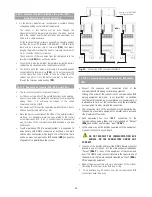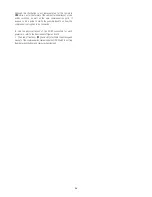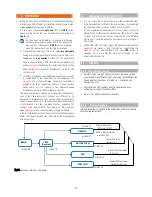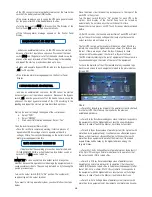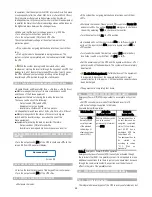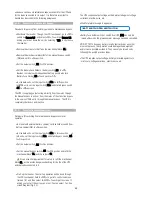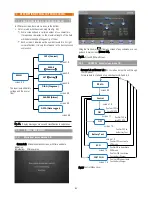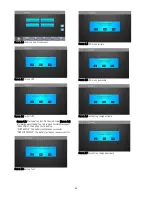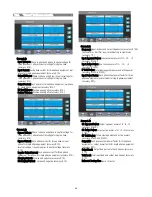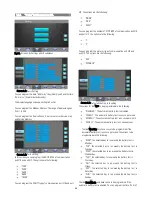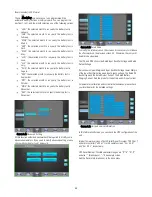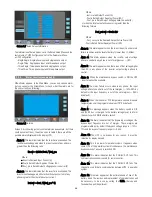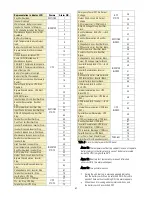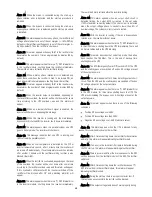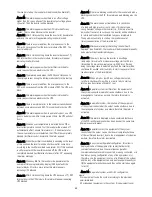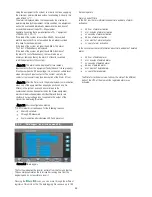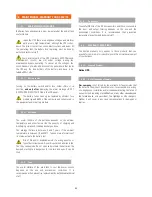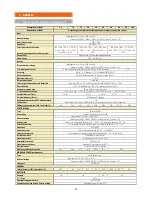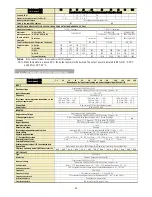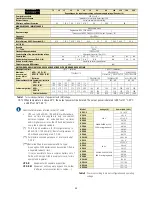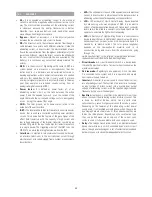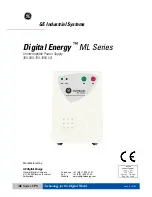
49
the inverter start up the inverter will be blocked (See Alarm 67).
˙
Alarm 49: This alarm appears when there is an offset voltage
higher than 8V, in any phase of the inverter output voltage phase
to neutral. Then the inverter will be blocked.
˙
Alarm 50: This alarm appears when the UPS is blocked for any
reason. This condition blocks also the inverter.
˙
Alarm 51: After 3 times shutting down the inverter for desaturation
and retry, this alarm will appear indicating inverter blocked.
˙
Alarm 52: There is a command from the microprocessor to the
DSP, with no response from the inverter module of the DSP. The
inverter will block.
˙
Alarm 53: After 5 times shutting down the inverter because of (*)
DSP Internal Error in the inverter module, this alarm will appear
indicating inverter blocked.
˙
Alarm 54: This alarm appears when the rectifier is blocked for
some reasons that can also blocks the UPS.
˙
Alarm 55: The alarm appears when the DSP doesn’t response to
the microprocessor during the initial procedure before the start up.
˙
Alarm 56: There is a command from the microprocessor to the
DSP, with no response from the UPS module of DSP. The UPS will
block.
˙
Alarm 57: This alarm appears when the inverter is blocked for
some reasons that can also blocks the UPS.
˙
Alarm 58: There is an internal error in the communication channel
between microprocessor and DSP. This condition blocks the UPS.
˙
Alarm 59: This alarm appears when, in a parallel system, one UPS
goes to battery mode. After some period of time, the UPS will shut
down.
˙
Alarm 60: When an over-temperature is detected by the PFC or
inverter temperature sensors, first the inverter will be turned off
automatically after 1 minute time (alarm 31). If one minute later
the over-temperature is still detected, the UPS will be completely
blocked (rectifier also shut-down) and the alarm appears.
˙
Alarm 61: When the rectifier is overloaded, depending on the level
of this overload, the inverter will be shut down after some time
according to the rectifier overload curve (alarm 32). If this overload
is still present with the inverter switched off, the UPS will be
completely blocked (rectifier also shut-down) after 30’’, appearing
this alarm message.
˙
Alarm 62: When any IGBT in the inverter side, desaturates the
number of times programmed by display (200 by default) the
inverter blocks. After two more retries this alarm appears
indicating UPS blocked.
˙
Alarm 63: After 3 times shutting down the UPS because of (*) DSP
Internal Error in the UPS module, this alarm will appear indicating
UPS blocked.
˙
Alarm 64: If there is a blocking condition for the inverter and also a
blocking condition for the PFC, this alarm appears blocking also the
UPS.
˙
Alarm 65: This alarm can be activated due to a connection
of a load with high inrush current, or also, if it is detected a
wrong transient voltage in the inverter (i.e., if there is a fault in
an inverter transistor). In such case, the inverter will be shutdown
for while and load will be transferred to bypass immediately.
The equipment will retry to start up the inverter several
times (see description of the Alarm 66 too).
˙
Alarm 66: After several attempts detecting “Inverter Fault/
Overload” (see Alarm 65), the inverter will be blocked permanently,
and output will be transferred to bypass.
˙
Alarm 67: The way to start up the inverter is on voltage
ramp mode (rms value from sinewave voltage starts at 0Vrms
till reaching its pre-set nominal value, i.e., 230Vrms). If when
doing the voltage ramp is detected any fault, the inverter will be
shutdown for a while, and it will retry to start it up several times
(see description of the Alarm 48 too).
˙
Alarm 68:.
When a high or low DC bus voltage is detected,
rectifier is shut down for a while, in order to retry to start up
later on (see description of Alarm 41 too).
˙
Alarm 69: In parallel system, rectifiers from the equipment of
the system connected in parallel can be shutdown, due to the
management of system as a whole, therefore this alarm is
activated.
˙
Alarm 70: In a parallel system, the inverters of the equipment
of the system connected at the output can be shutdown, due to
the management of system as a whole, therefore this alarm is
activated.
˙
Alarm 71: This alarm is displayed when a combined shutdown
of the PFC-rectifier and inverter has been done at the same time
(there are several reasons).
˙
Alarm 72: In parallel system, the equipment of the system
connected at the output can be shut down (complete shutdown
of the rectifier and inverter), due to the management of system as
a whole, therefore this alarm is activated.
˙
Alarm 73: In a system with parallel configuration, this alarm is
displayed in one of the equipment (or some) that detect(s)
communication errors, due to several reasons (parallel
communication cables are disconnected, or wrong connected, or in
bad status; wrong configuration of any of the equipment; etc.).
Therefore, one the equipment is set as a fix Master of the system,
and the rest of the equipment can only be slaves permanently (or
till the equipment are shutdown and they will be started up again
to test it).
˙
Alarm 74: In a parallel system, with N+M configuration,
where:
N: nr equipment to size the system according to the maximum
permissible load.
M: nr redundant equipment in the system. It is equivalent to over

